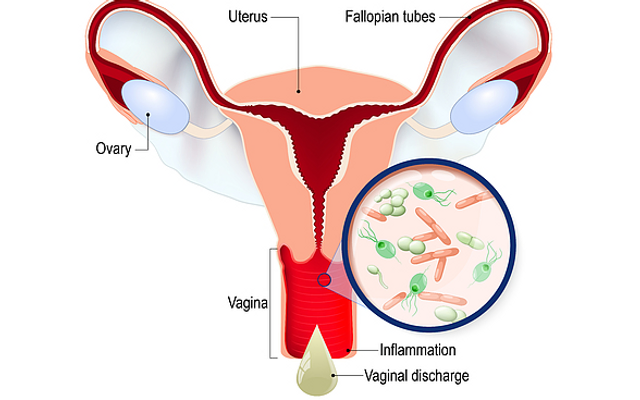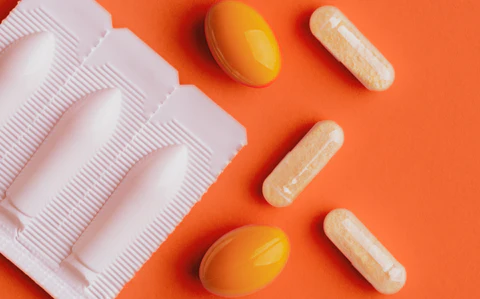Yeast infections are a common issue, affecting many people at some point in their lives. Understanding how to treat a yeast infection effectively and safely is crucial for those experiencing symptoms. In this comprehensive guide, we will explore the best methods for self-treating a yeast infection, when to seek professional medical advice and preventive measures to keep infections at bay.
Table of Contents
Understanding Yeast Infections
Yeast infections, also known as candidiasis, are caused by an overgrowth of Candida, a type of fungus that naturally lives in the body. This overgrowth can occur in various parts of the body, including the mouth, throat, gut, and genital area. The most common type of yeast infection is vaginal candidiasis, but it can also affect men and children.
YOU MAY ALSO READ: What is the Leading Cause of Ulcerative Colitis?
Symptoms of Yeast Infections
Recognizing the symptoms of a yeast infection is the first step toward effective treatment. Common symptoms include:
- Itching and irritation in the affected area.
- Redness and swelling.
- White, thick discharge resembling cottage cheese (vaginal yeast infections).
- Burning sensation during urination or intercourse.
- Soreness and rash.
If you experience these symptoms, it’s essential to confirm that a yeast infection is the cause, as other conditions can mimic these signs.
Self-Treatment Options
Self-treating a yeast infection can be effective if done correctly. Here are the most common and effective methods:
Over-the-Counter Antifungal Treatments
Over-the-counter (OTC) antifungal treatments are readily available and come in various forms, including creams, ointments, tablets, and suppositories. Popular options include:
- Clotrimazole (Lotrimin)
- Miconazole (Monistat)
- Tioconazole (Vagistat)
These treatments typically need to be applied for 1-7 days, depending on the product. Follow the instructions carefully to ensure effective treatment.
Home Remedies
Some people prefer natural remedies to treat yeast infections. While scientific evidence supporting their efficacy is limited, anecdotal reports suggest they can be helpful:
- Yogurt: Applying plain, unsweetened yogurt to the affected area can introduce beneficial bacteria that help restore balance.
- Coconut Oil: Known for its antifungal properties, coconut oil can be applied directly to the infection site.
- Tea Tree Oil: Diluted tea tree oil has antifungal properties and can be applied topically. Ensure it is adequately diluted to avoid skin irritation.
Probiotics
Probiotics, such as Lactobacillus acidophilus, can help restore the natural balance of bacteria and yeast in the body. They are available in supplements and probiotic-rich foods like yogurt and kefir.

When to Seek Medical Advice?
While many yeast infections can be treated at home, certain situations require professional medical attention:
- If you experience yeast infections frequently, it may indicate an underlying health issue that needs to be addressed.
- Intense symptoms or infections that do not improve with OTC treatments warrant a doctor’s visit.
- A healthcare professional can provide a proper diagnosis if you’re unsure whether your symptoms are due to a yeast infection.
Prescription Treatments
In some cases, prescription antifungal medications may be necessary. These include:
- Fluconazole (Diflucan): An oral medication typically taken as a single dose.
- Nystatin: Available in oral and topical forms, often used for thrush (oral candidiasis).
Your healthcare provider will determine the best treatment based on the severity and location of the infection.
Preventive Measures
Preventing yeast infections involves maintaining a healthy balance of bacteria and yeast in your body. Here are some effective strategies:
Hygiene Practices
- Moist environments encourage yeast growth.
- This can disrupt the natural balance of bacteria and yeast in the vagina.
- This helps keep the genital area dry and reduces the risk of infection.
Diet and Lifestyle
- High sugar levels can promote yeast growth.
- Include probiotic-rich foods to support healthy bacteria.
- Chronic stress can weaken the immune system, making you more susceptible to infections.
Medication and Health Management
Overuse of antibiotics can kill beneficial bacteria, leading to yeast overgrowth. This is especially important for people with diabetes, as high blood sugar can encourage yeast growth.
Conclusion.
Yeast infections, though common and often uncomfortable, can be effectively managed and prevented with the right knowledge and practices. Whether opting for over-the-counter treatments, home remedies, or seeking medical advice, understanding your body and maintaining a healthy lifestyle are key to preventing and treating yeast infections. For more detailed information about yeast infections and other health topics, visit authoritative health websites or consult with a healthcare professional.


Leave a Comment